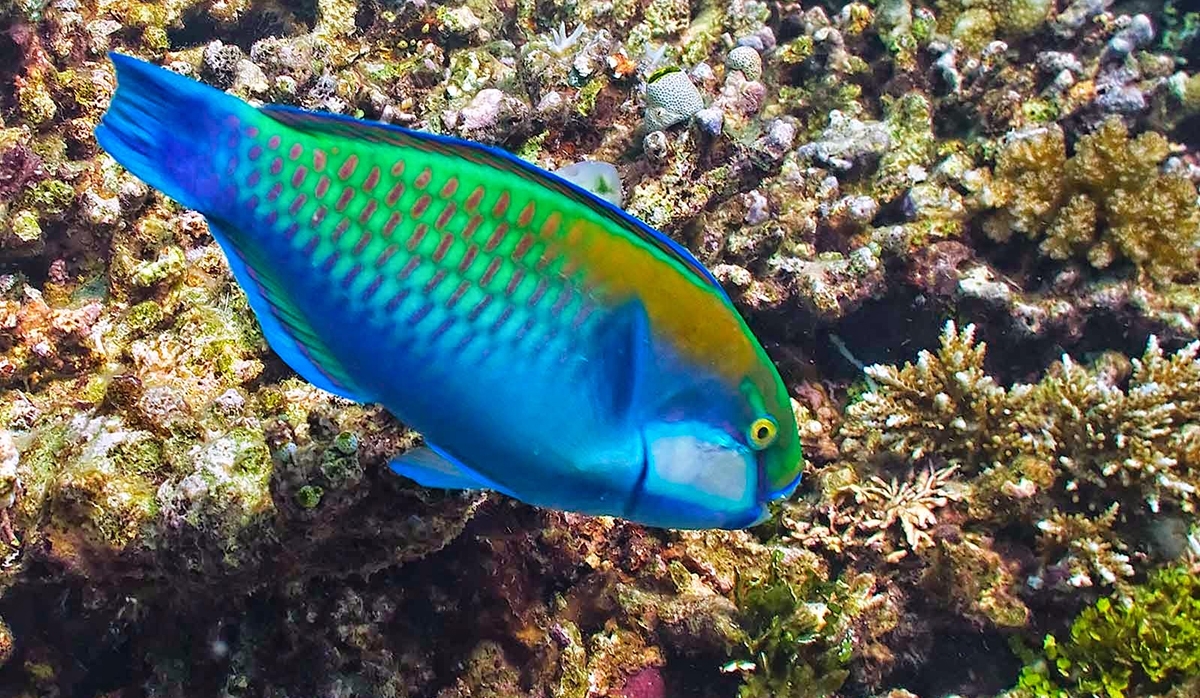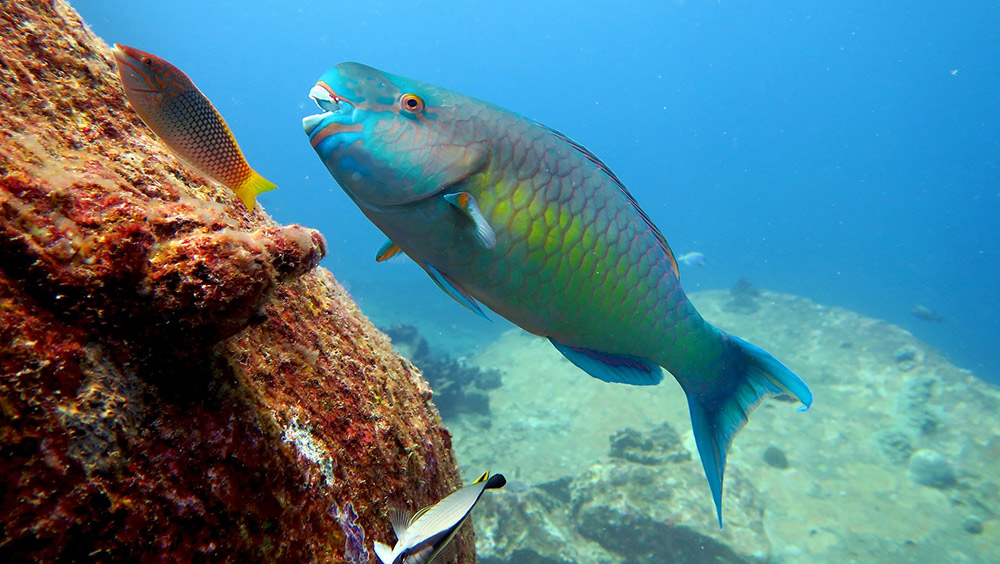Parrot Fish
The parrot fish belongs to the Scaridae family of the perchiformes order, it is distinguished by a fixed mouth and a special structure of teeth – accrete incisors on the jaws form a kind of parrot beak. Each jaw consists of two plates separated by a seam. This structure of the mouth allows the parrot to easily bite off pieces of coral. Parrot fish is distinguished by a wide variety of colors, shades, head structure and size. Among all the diversity of the inhabitants of coral reefs, they stand out for their large size and their bright colors, sometimes you don’t even have to dive to see them.
Parrot fish has a powerful forehead and are painted in various shades of blue and green interspersed with red and yellow spots. The juveniles are completely different from adult fish, they are of the same color with dark specks, spots and stripes.
The dorsal fin, as a rule, has 9 spines and 10 soft rays. The anal fin contains three spiny spines and 9 soft rays. Caudal fin with 11 branched rays; in some species, the extreme upper and lower rays may be much longer than the others. The scales are large, cycloidal. There are 25 vertebrae in the spine.

Parrot fish is herbivorous, as a rule, they scrape algae from dead coral substrates, pieces of stones and corals, which they bite off together with algae, serve to improve digestion. After the fish have digested rocks and pieces of coral, they excrete them in the form of powdery sand a.k.a Parrotfish poop, thus becoming one of the most important producers of sand on coral reefs.
Maldives is known for having best beaches in the world surrounded by crystal clear water and colorful coral reefs. But where does this beautiful postcard come from? There are many factors, but perhaps the most unexpected one of all is the Parrotfish, they can generate more than 85% of the sand found on white sandy beaches, and that only one of these beautiful creatures can poop up to 250g of sand in just one day.
The first description of a parrot fish dates back to 1601, the name comes from the Greek «skairo» – to jump, probably associated with jumping over the water and blowing its tail, which was very well known to ancient fishermen.
The parrot fish leads a solitary life, keeps on “its” site, in case of danger and takes refuge in caves or crevices of coral reefs at night. Practically does not leave its habitat, because the main food of parrot is found only on coral reefs.
With the onset of night, the parrot fish secretes mucus around itself, forming a protective shell that prevents the spread of odor and protects it from nocturnal predators.
The main habitat is the tropical and subtropical zones of three oceans: the Atlantic, Indian and Pacific.
The parrot fish is not aggressive, slow, and does not pay attention to the divers and snorkelers swimming around, going about their business.


